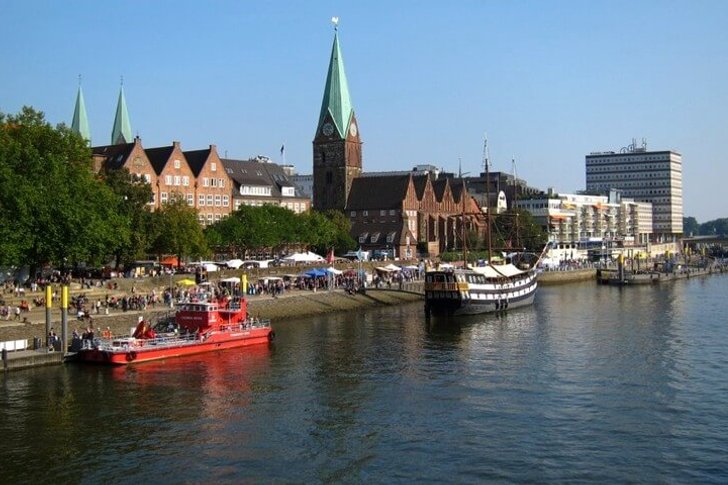Bremen is one of the oldest cities in Germany. It was founded by Charlemagne in 787. Since the 9th century it has become an important religious center, later it gained the glory of a free trading city. The surviving monuments of the Middle Ages are living evidence of the prosperity of Bremen for many centuries. On the Market Square in front of the statue of Roland, tourists seem to be transported to the 15th century, and the graceful forms of the Renaissance town hall make you sincerely admire the local architecture.
Sometimes it seems that modern Bremen is torn out of the usual flow of time. A similar feeling often visits travelers while walking along the ancient streets of European cities. Before your eyes - century-old facades and paving stones from the reign of the Dukes of Saxony, and literally in a few blocks there are already quite modern shops and offices.
What to see and where to go in Bremen?
The most interesting and beautiful places for walking. Photos and a short description.
- Market Square
- Shnoor District
- Böttcherstrasse
- Bremen town hall
- Statue of Roland
- Sculpture The Bremen Town Musicians
- Cathedral of Saint Peter
- Scientific Center Universum
- Ubersee Museum
- Bremen Art Gallery
- Foke Museum
- Paula Modersohn-Becker Museum
- Variety Theater GOP
- Chamber of Commerce Schütting
- House with Bells
- Submarine bunker Valentin
- Shaft mill
- Rhododendron Park
- Burgerpark
- Embankment Schlachte
Market Square
The market square is surrounded by historical buildings of the 11th - 17th centuries: the town hall, the building of the trade guild, the parliament, the cathedral and old town houses. Here is the famous Roland with the sword of justice in his hands and a monument to the Bremen town musicians. The square is considered one of the most beautiful in Germany. Due to the large number of attractions, it is always filled with tourists.
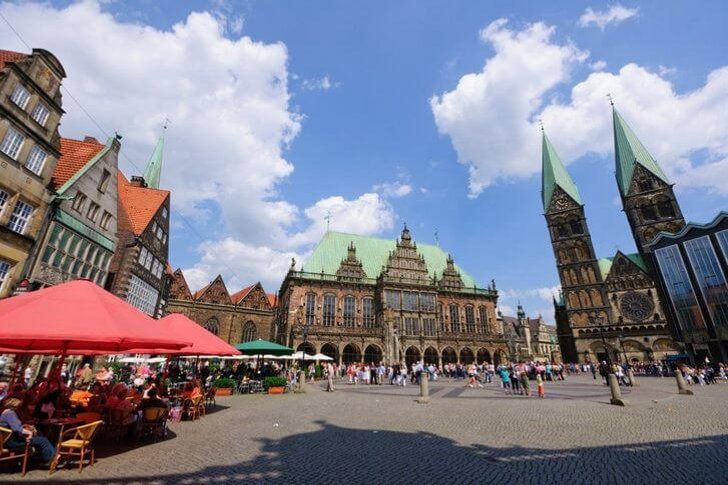
Shnoor District
One of the oldest city streets, in the past it served as the economic center of Bremen. Attracted by the proximity of the river, merchants, fishermen and artisans have long settled here. Houses built in the 13th century are still preserved here. But still, the bulk of the buildings belong to the XVII-XVIII centuries. The street got its name from a certain craft for making ropes, since “schnor” in German means “cord”.
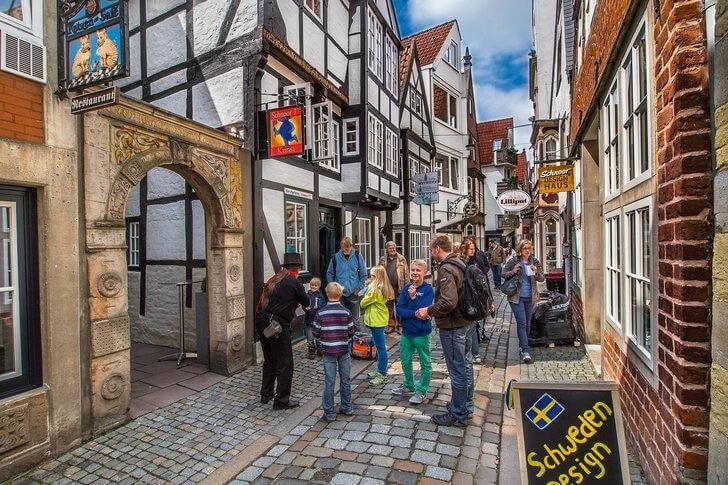
Böttcherstrasse
A small street, which consists of only 7 houses. Each building is unique in its own way and has its own name. Among them are the houses of Robinson Crusoe and the Seven Sloths. The premises house several museums, a theater and a belfry. Böttcherstrasse appeared in the 1930s thanks to the idea of the sculptor B. Höttger and patron L. Roselius. It was with the money of the latter that the old buildings were restored.

Bremen town hall
A unique architectural monument and one of the most prominent representatives of the Weser Renaissance style, located on the Market Square. Today, as before, the city authorities sit in the building. The town hall was built in the early 15th century in the Gothic style, but in 1600 it was rebuilt in the Renaissance style, decorating the facade and walls with numerous reliefs and sculptures.
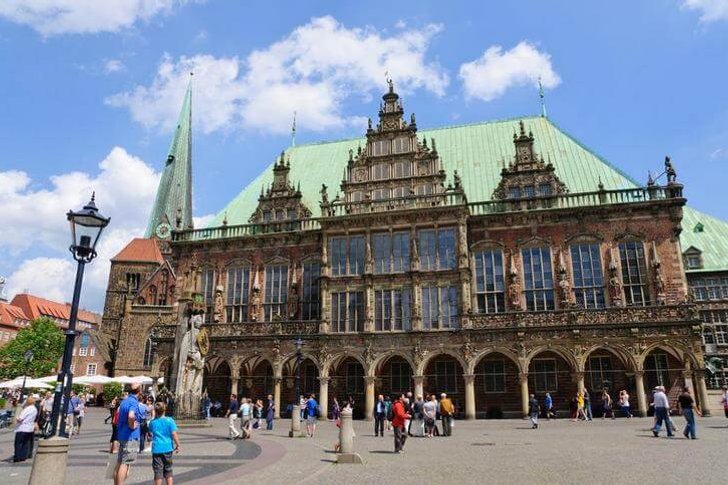
Statue of Roland
The most recognizable symbol of Bremen, adorning the Market Square. According to an ancient legend, as long as this monument stands, the city will retain its independence. The first wooden Roland appeared in the 14th century, but already in 1404 it was replaced with a stone statue, because the soldiers of the Archbishop of Braunschweig burned the previous one. The height of the statue is about 4.5 meters, a shield with the imperial coat of arms is fixed on its chest, and a sword is in its hands.
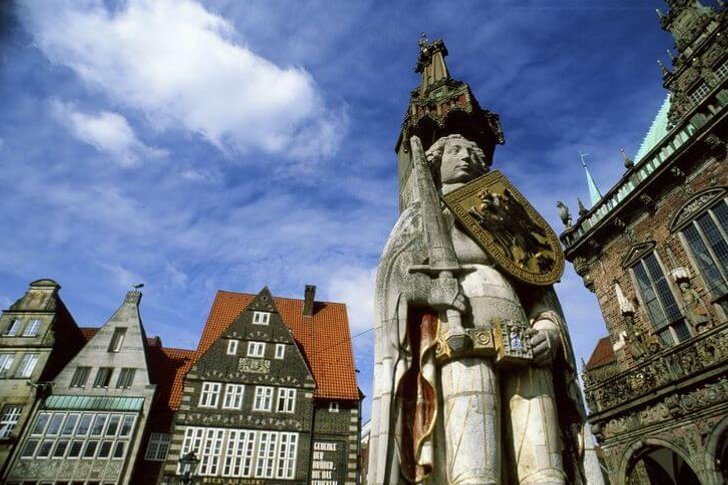
Sculpture "The Bremen Town Musicians"
Probably everyone knows the fairy tale of the Brothers Grimm "The Bremen Town Musicians". In 1951, a sculpture dedicated to the heroes of this story appeared right in front of the town hall: a donkey, a dog, a cat and a rooster. The animals stand on top of each other and form a pyramid with their bodies. The idea to perpetuate the work of Grimm came up with the sculptor G. Marx. Another similar monument stands on Böttcherstrasse and in Riga, Bremen's sister city.
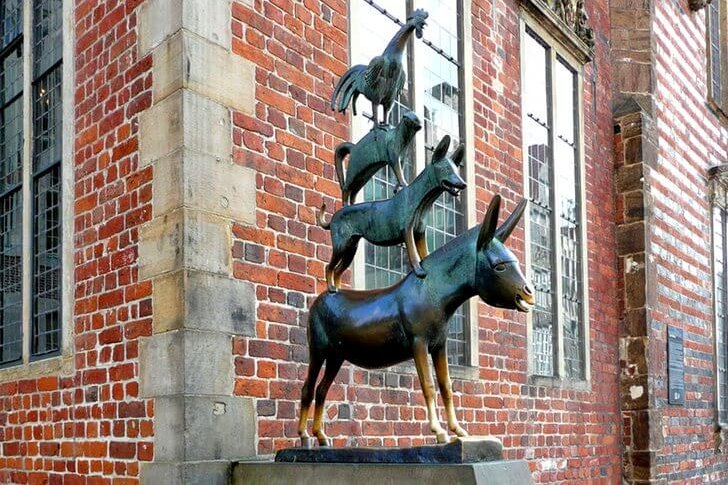
Cathedral of Saint Peter
There are two versions about the appearance of the temple. According to the first, it originated in the 8th century, the second points to the 11th century. The truth can no longer be reached, especially since the cathedral was rebuilt several times. During the Second World War, it was almost completely destroyed, but the restorers managed to restore the unique monument. The building was built in a mixed architectural style with Gothic and Baroque features.
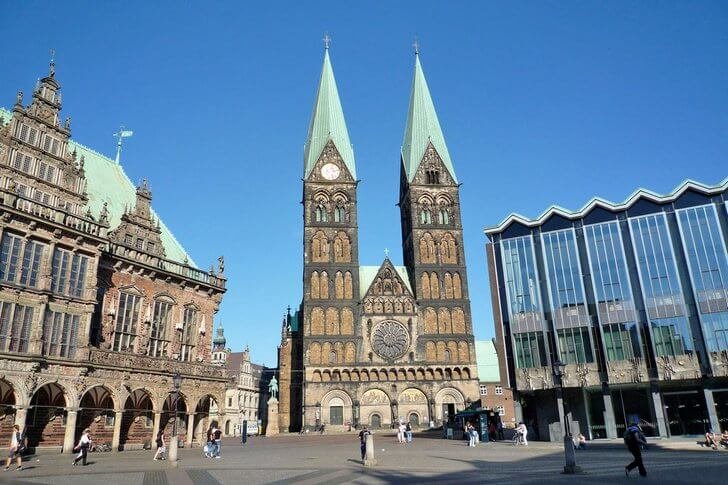
Scientific Center "Universum"
A modern museum where scientific achievements are demonstrated. His collection is divided into three parts: "Humanity", "Earth", "Space". Each of them presents quite interesting exhibits. In "Universum" you can make an exciting journey into outer space, look into the depths of the ocean, suddenly find yourself in the center of an earthquake or on top of a mountain.

Ubersee Museum
Museum of Ethnography and Natural History, which has an extensive collection. The exposition is located in a building that is recognized as an architectural monument. The museum appeared in 1875 after the Bremen Society of Natural History transferred its collection to the disposal of the city authorities. For convenience, the Ubersee exhibition space is divided into geographical zones.

Bremen Art Gallery
The City Art Museum is one of the most significant in all of Germany. Here is a collection of works of art relating to the period of the XIV - XXI centuries. The gallery was founded in 1823 to "spread the sense of beauty," according to a statement from those years. From the very beginning, patrons of the city patronized it, so the construction of a separate building was not long in coming.

Foke Museum
At the Fock Museum, visitors will get acquainted with the rich history of Bremen and learn about how the townspeople lived several centuries ago. The collection is presented in the form of reconstructions of residential buildings and rooms, where furniture and interior items from various eras are exhibited. The museum was founded in 1922 on the basis of the private collection of J. Foke. In the 1950s, a new building was built for the exposition, as the old one was destroyed during the war.
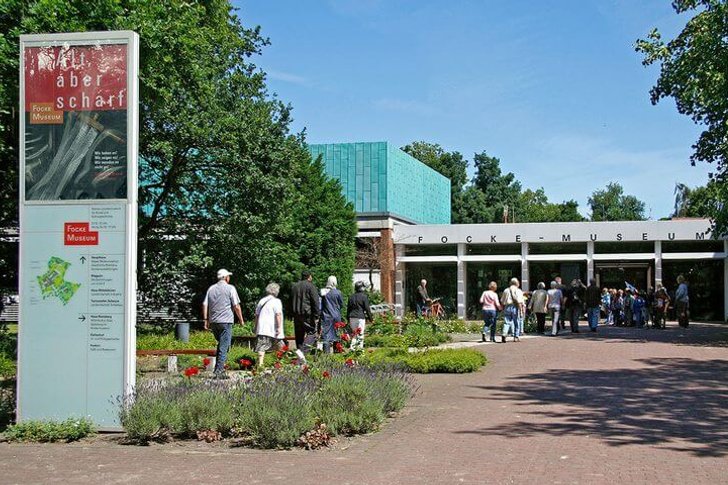
Paula Modersohn-Becker Museum
The collection is dedicated to the work of the expressionist artist Paula Modersohn-Becker. During her lifetime, she created over 700 paintings and over 1,000 drawings. Such a rich creative heritage needed a separate exhibition, and in 1927, 20 years after her death, the painter was honored with the opening of a personal museum. The collection is housed in a Renaissance mansion of the 16th century.

Variety Theater "GOP"
An entertainment venue where visitors are offered dinner and a show at the same time. While the performances are on stage, the guests can enjoy the food - this format is quite common in Europe. Basically, GOP gives performances reminiscent of circuses: acrobats, illusionists and dancers in bright, memorable costumes can often be seen on the stage.

Chamber of Commerce Schütting
The Chamber of Commerce has existed since 1441. It is still the center of the Bremen merchants. The building itself was erected in 1537-1538 in the style of the Florentine Renaissance. In the XVIII - XIX centuries the building was rebuilt. As a result of the reconstruction, the house acquired a more modern facade, a luxurious portal and a staircase. In 1944, the building burned down and only the frame remained of it. Restoration continued until 1956.
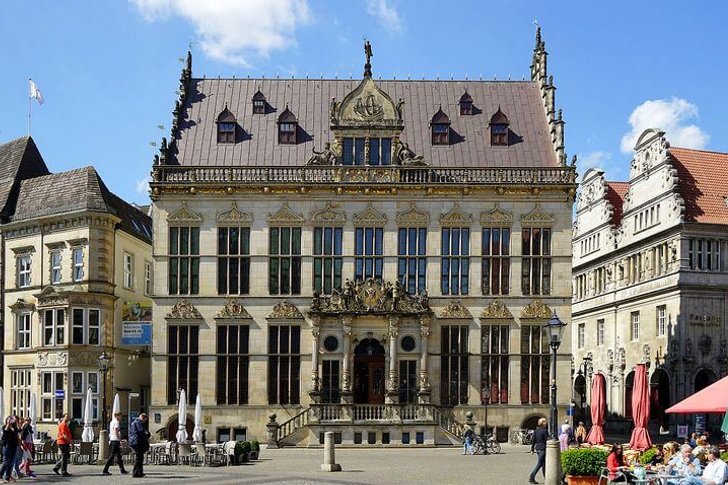
"House with Bells"
A unique building from 1934 that has its own melody. The walls of the house ring thanks to 30 porcelain bells hanging between the two pediments of the building. They make melodious sounds according to the schedule: during the first half of the year, the ringing is heard 3 times a day, in the second - hourly until 18:00. There is also a wood-panelled revolving tower depicting famous pioneers.

Submarine bunker "Valentin"
The secret shelter of the Third Reich, built by the forces of concentration camp prisoners in March 1945. But he was never destined to earn money, as the allied forces defeated and after a while captured the bunker. After the war, it was actively used by the US Air Force. In 2008, the government put the object up for sale and it was bought by a group of private investors to organize a thematic museum.
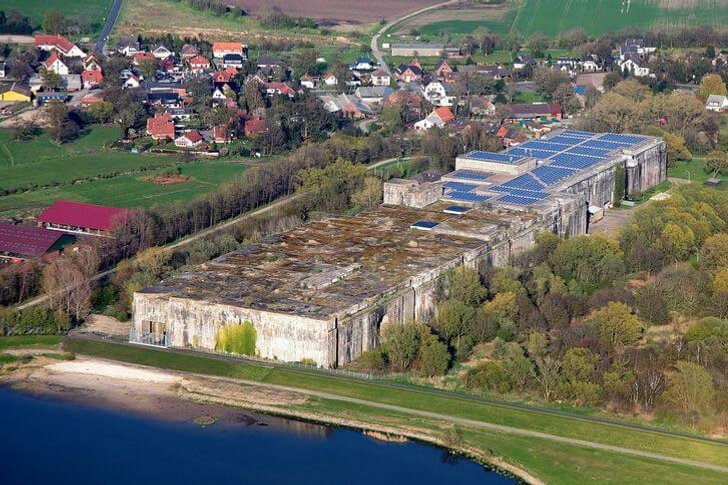
Shaft mill
The old mill is the only building that has survived from the flour mill, which began work in the 17th century. In height, the structure reaches the size of a four-story building. A landscaped square is laid out around it, inside there is a restaurant "Kaffee M hle". The place is very popular with tourists and residents of Bremen. Musical performances are held here once a month.

Rhododendron Park
A large green area of 46 hectares, where multi-colored rhododendrons and azaleas are collected. In total, about 600 species and several thousand bushes grow here. From late April to June, during the flowering period, the park turns into a magnificent motley carpet that blooms with all possible colors. There is also a botanical garden with exotic species imported from America and the Far East.
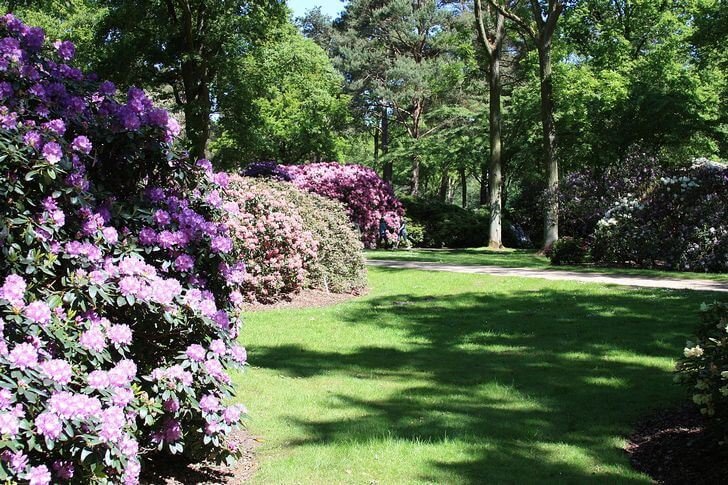
Burgerpark
Burgerpark in Germany is a type of public recreational space with green spaces, cozy alleys and a lake, usually adjacent to a castle or palace. Similar parks were created in many German cities with collective funds. Bremen was no exception, only the local Burgerpark emerged in the 20th century around a luxurious five-star hotel.
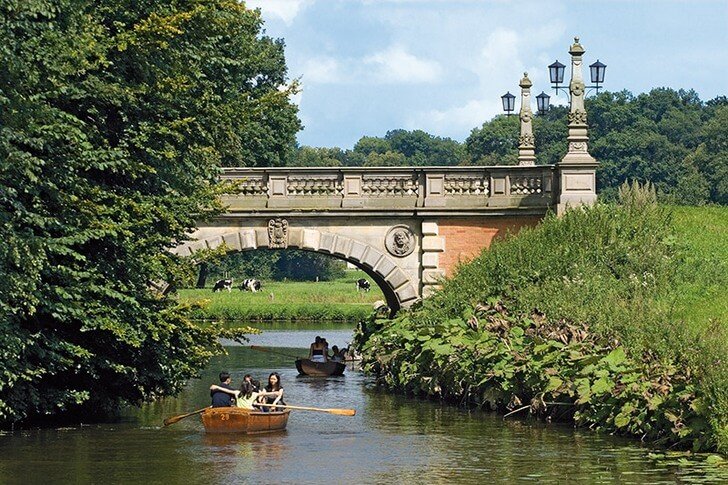
Embankment Schlachte
The main city promenade, located on the site of the old port. There are models of ships of past eras and old houses. There is a restaurant on board the frigate Admiral Nelson. There is also a spacious beer garden for 5,000 seats. The Schlachte embankment is one of the most popular walking routes in Bremen. If you wish, you can ride on one of the ships that moor in the local harbor.
